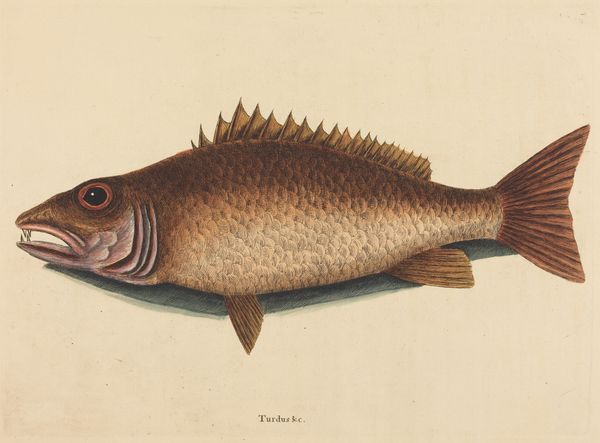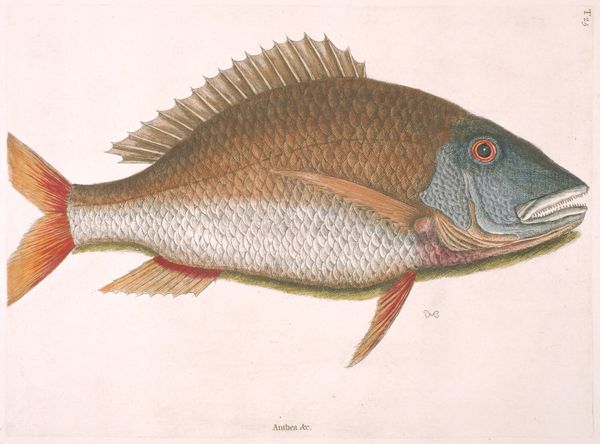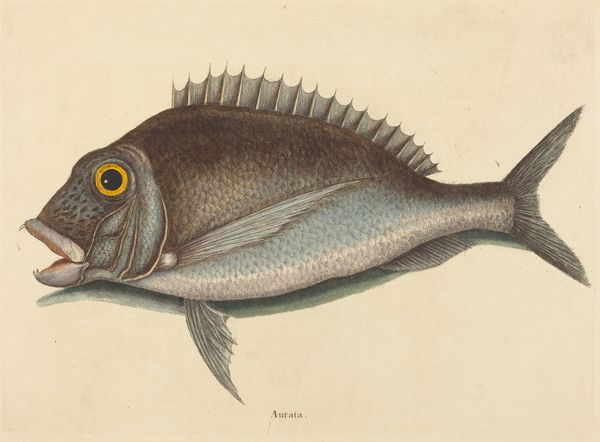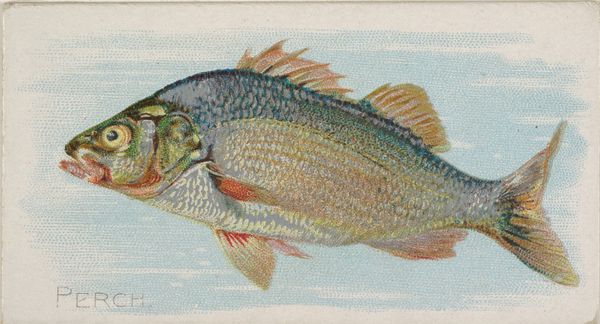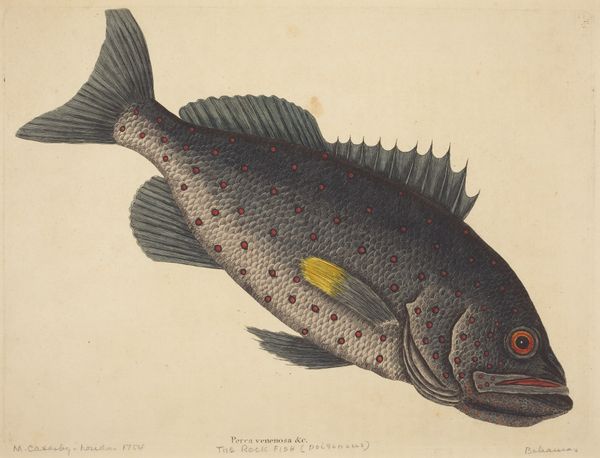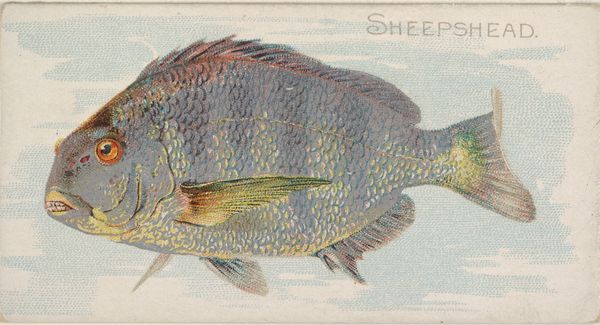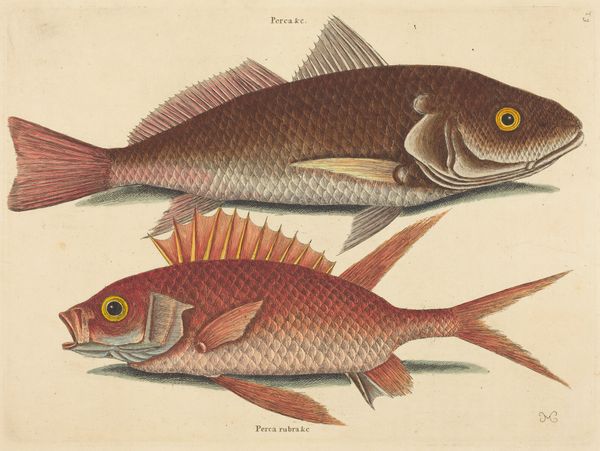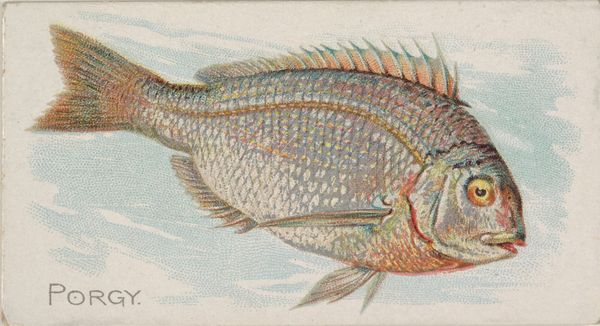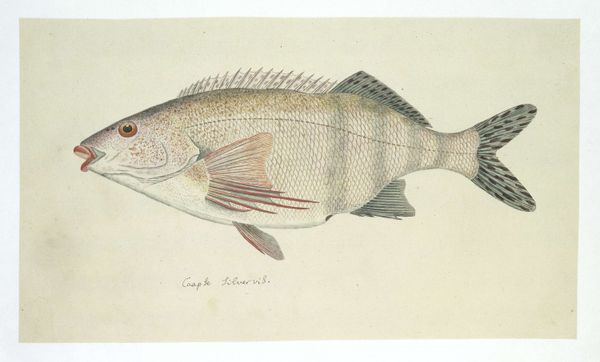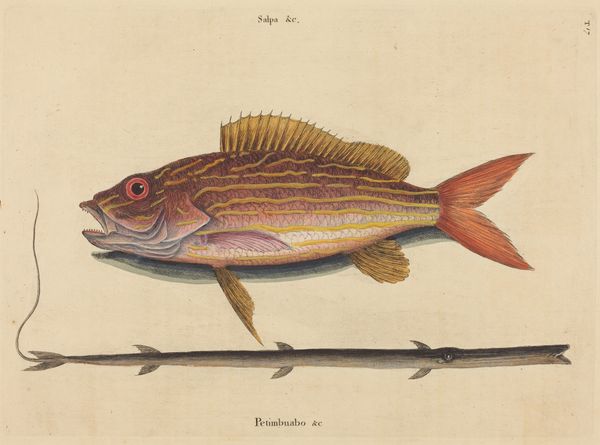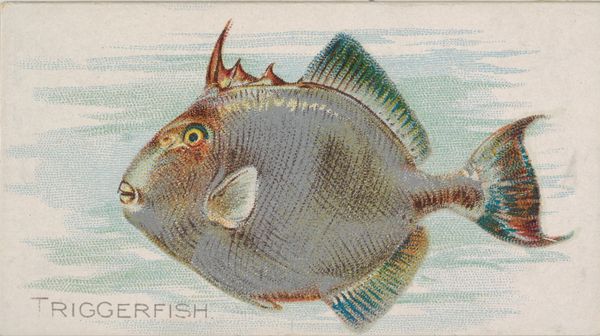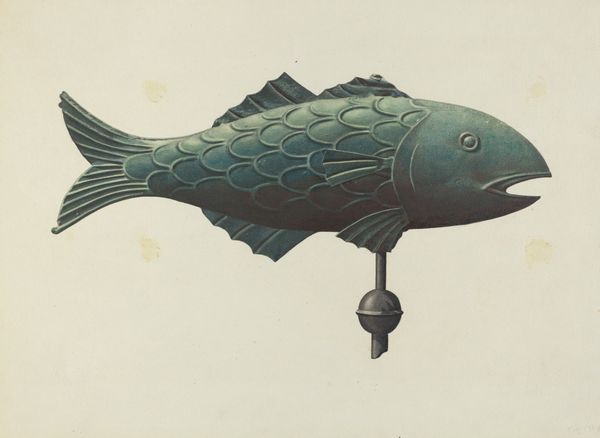
hand-colored-etching, print, etching, watercolor
#
toned paper
#
hand-colored-etching
#
animal
# print
#
etching
#
watercolor
#
coloured pencil
#
watercolour illustration
Dimensions: 10 x 13 7/8 in. (25.4 x 35.31 cm) (sheet)
Copyright: Public Domain
Curator: This vibrant depiction of "The Angel Fish," a hand-colored etching, dates back to between 1731 and 1743. It's the work of Mark Catesby, and it's currently part of the collection here at the Minneapolis Institute of Art. The piece features colored pencil and watercolour illustration and a great sense of tonal range, on toned paper. Editor: Immediately, I'm struck by its slightly melancholic mood. The color palette, while bright, carries an undercurrent of quiet observation. The careful detailing of each scale contrasts with the overall stillness of the composition. There's a scientific feeling. Curator: That melancholic air you detect likely stems from Catesby's meticulous scientific approach. He aimed to catalog the natural wonders of the Americas, capturing them with an almost photographic accuracy, and therefore it feels emotionally reserved. The angel fish swims suspended between symbolism and objectivity. The fins are so elaborate. Editor: It makes me consider the colonial gaze and its inherent power dynamic, though. Catesby's illustrations served not just scientific inquiry but also shaped European perceptions of the "New World," presenting these wonders—like this angelfish—as commodities to be consumed, represented, possessed. Were these representations used for more nefarious things? Curator: Indeed. His meticulous attention does capture the zeitgeist, but those very details take on new meaning with time. Even seemingly benign scientific illustrations reflect the biases and values of their historical context. Do you see the color usage as conveying cultural memory, the attempt to name something with whatever tools you have from a former geography? Editor: Precisely. There's also something unsettling in how isolated the fish appears, divorced from its natural habitat. The artist may be showcasing its uniqueness. Curator: The stark background emphasizes its almost ethereal form, inviting contemplation on its intrinsic value. What symbolic meaning could the colours give? Editor: For me, the vibrant yellow core overlaid with green, feels like the exploitation of resources, turning the beautiful animal into a kind of specimen to be admired from afar—detached from its complex life. I appreciate your interpretation also. It feels a valid part of this painting. Curator: I've certainly appreciated the opportunity to consider its dual existence—as both scientific record and artistic artifact, carrying complex layers of history within its carefully rendered scales. Editor: Me too. Analyzing how seemingly straightforward depictions can hold layers of cultural and political weight definitely gives you a different appreciation of art and how it intersects with society.
Comments
No comments
Be the first to comment and join the conversation on the ultimate creative platform.
